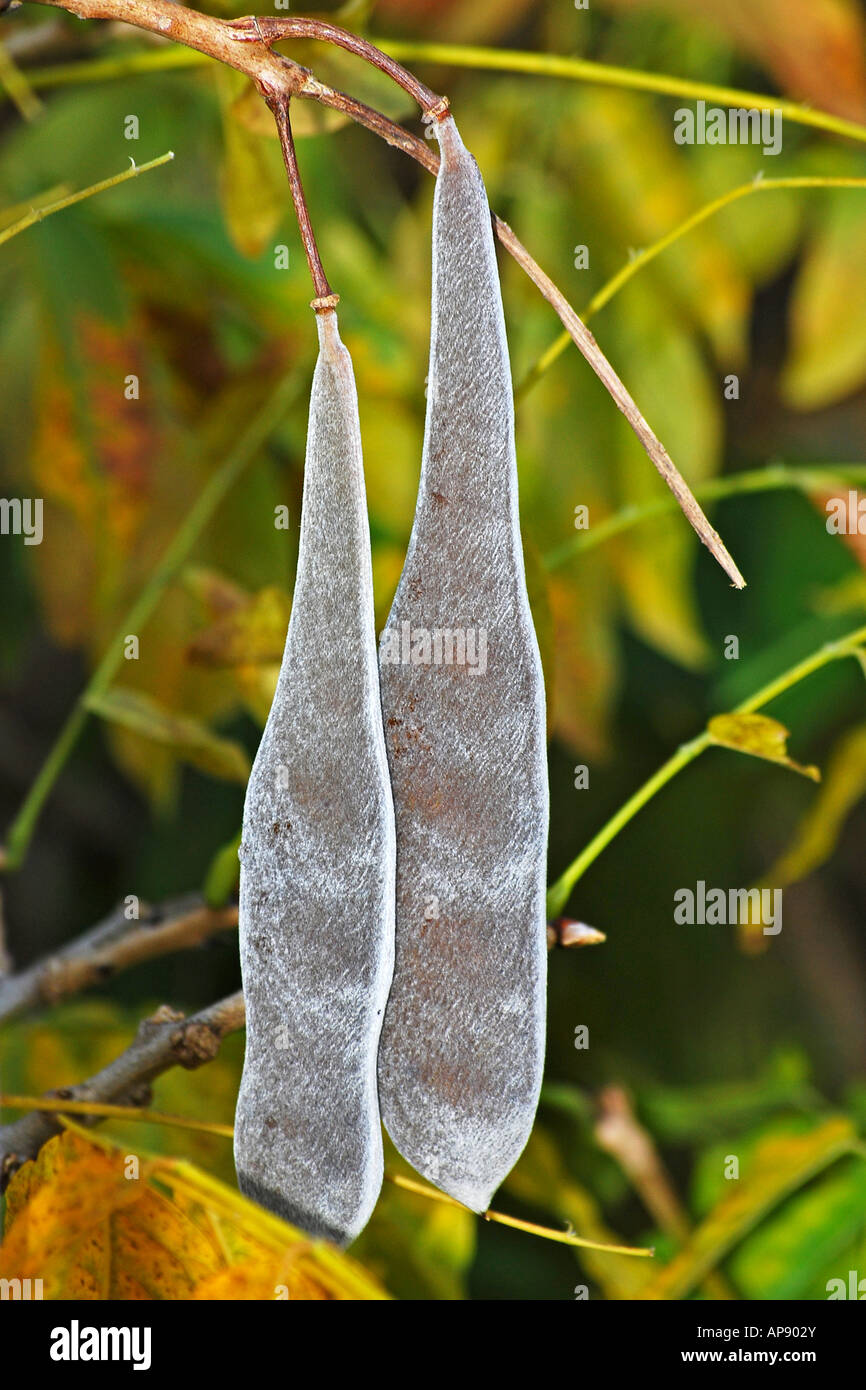Introduction
Wisteria, a mesmerizing vine with cascading clusters of fragrant flowers, has captivated gardeners for centuries. Traditionally propagated through cuttings or grafting, wisteria can also be grown from seed, offering a unique and rewarding experience. In this in-depth guide, we will walk you through the intricacies of starting wisteria from seed, empowering you to cultivate these stunning plants in your own garden.

Image: www.alamy.com
Wisteria: A Brief Introduction
Wisteria, also known as Japanese wisteria or glycine, is a genus of climbing vines native to eastern North America and Asia. With a rich history steeped in folklore and tradition, wisteria is renowned for its exquisite, grape-like flower clusters that appear in an array of colors, from delicate whites to deep purples. These vines can grow up to 30 feet in length, transforming arbors, pergolas, and fences into enchanting living tapestries.
Starting Wisteria From Seed: A Step-by-Step Guide
1. Gather Your Supplies
- Wisteria seeds
- Seed starting mix
- Seedling trays or pots
- Plastic wrap or humidity dome
- Warm, well-lit location

Image: 1littlesong.blogspot.com
2. Prepare the Seeds
To enhance germination rates, soak the wisteria seeds in warm water for 24 hours. This will help soften the hard seed coat, allowing water to penetrate more easily.
3. Sow the Seeds
Fill seedling trays or pots with a well-draining seed starting mix. Create shallow furrows, about 1/4 inch deep, and sow the seeds 1-2 inches apart. Cover the seeds lightly with soil and gently press down to ensure good contact.
4. Provide Warmth and Humidity
Wisteria seeds require warm temperatures to germinate. Place the seedling trays or pots in a warm, well-lit location, such as a heat mat covered with a plastic wrap or a humidity dome. The ideal germination temperature is between 70-80°F (21-27°C).
5. Keep the Soil Moist
Water the soil regularly, keeping it moist but not waterlogged. Avoid overwatering, as this can lead to damping off. Use a spray bottle to mist the surface of the soil and maintain high humidity levels.
6. Be Patient
Wisteria seeds can take several weeks to germinate. Don’t be discouraged if you don’t see results immediately. Continue to provide warmth, humidity, and moisture, and eventually, you will be rewarded with tiny wisteria seedlings.
Tips and Expert Advice
For increased success in starting wisteria from seed, heed these valuable tips from seasoned gardeners:
- Use fresh wisteria seeds. Older seeds have a lower germination rate.
- Stratify the seeds before sowing by keeping them in a sealed bag in the refrigerator for several weeks. This mimics the cold winter conditions that trigger germination in nature.
- Provide a warm, well-lit location. Wisteria seedlings require plenty of light and heat to thrive.
- Be patient. Wisteria seeds can take several weeks to germinate, so don’t give up too soon.
- Transplant the seedlings into individual pots when they are a few inches tall.
- Protect the young wisteria plants from frost.
FAQs About Growing Wisteria From Seed
Below, we address some frequently asked questions that may arise when starting wisteria from seed, providing you with clear and concise answers to guide your journey:
- Q: Can wisteria be grown from seed?
A: Yes, wisteria can be grown from seed, although it is not the most common method of propagation.
- Q: How long does it take for wisteria seeds to germinate?
A: Wisteria seeds can take several weeks to germinate. Be patient and provide the necessary conditions, such as warmth and moisture.
- Q: Why aren’t my wisteria seeds germinating?
A: There could be several reasons why wisteria seeds are not germinating. Check if the seeds are fresh, the soil is moist but not waterlogged, and the temperature is warm enough.
- Q: Can wisteria grown from seed produce flowers?
A: Yes, wisteria grown from seed can produce flowers. However, it may take several years for the plant to mature and bloom.
- Q: How do I care for wisteria seedlings?
A: Water the seedlings regularly, fertilize them monthly, and provide support for the vines to climb.
How To Start Wisteria From Seed
Conclusion
Starting wisteria from seed can be a rewarding endeavor, offering a unique way to cultivate these beautiful and fragrant vines. By following the comprehensive guide outlined in this article, incorporating expert advice, and addressing common FAQs, you can successfully embark on this horticultural journey. So, embrace the challenge, sow those wisteria seeds, and witness the wonders of nature as they transform into thriving, flowering vines.
Are you ready to embark on this adventure of growing wisteria from seed? Share your questions, experiences, or any additional tips you may have in the comments below. Together, let’s unravel the beauty and wonder of these captivating plants.